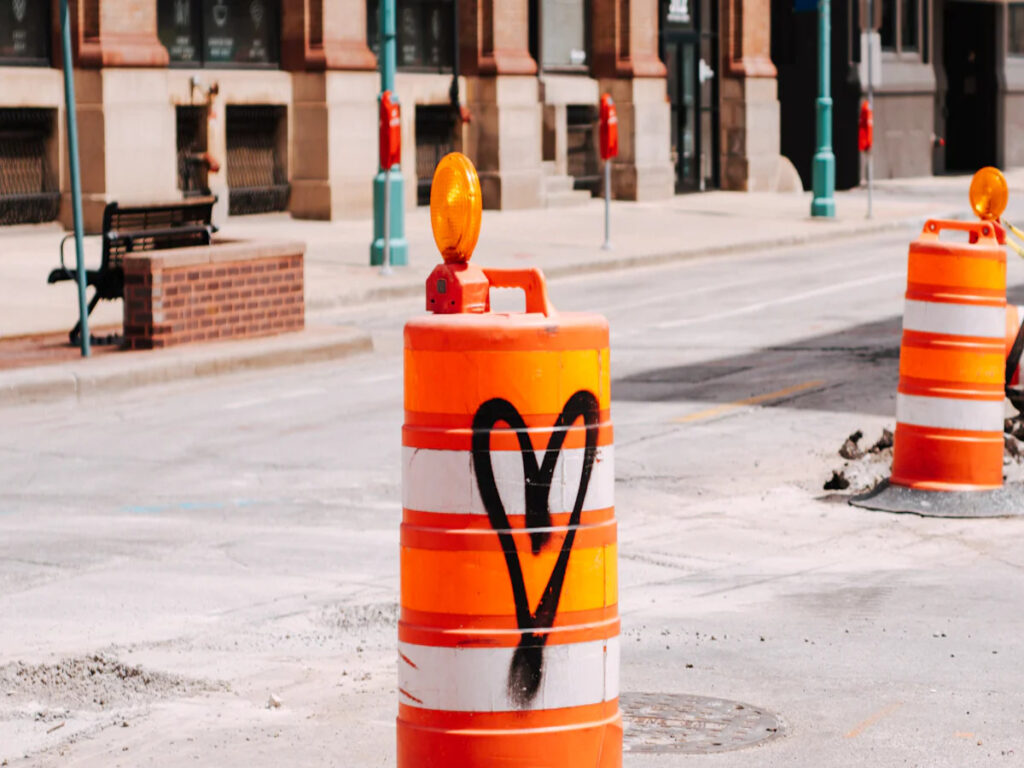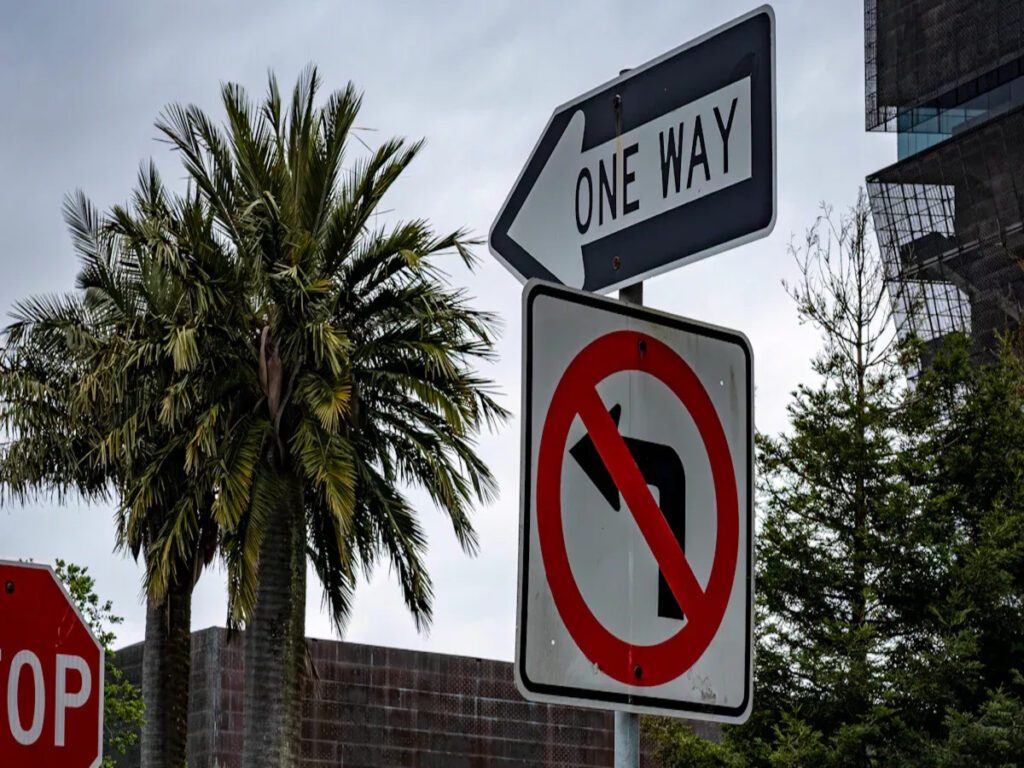
الأقماع المرورية play a vital role in shaping how you respond to your surroundings. لونها البرتقالي الزاهي يجذب انتباهك على الفور, كسر تركيزك من المهام الروتينية. تعمل هذه الإشارة المرئية على زيادة الوعي وتشجعك على التصرف بحذر. تضمن المواد المتينة والعناصر العاكسة الرؤية, حتى في ظروف الإضاءة المنخفضة, تعزيز السلامة للجميع. مع أكثر 140 مليون الأقماع المرورية in use globally, إن وجودهم هو إشارة عالمية لليقظة. يمكن لصورة مخروط المرور البسيطة أن تثير إحساسًا بالنظام والحذر, لتذكيرك بالبقاء في حالة تأهب وإعطاء الأولوية للسلامة.
دور اللون: How Orange Increases Awareness

The vibrant orange color of traffic cones is not just a design choice; it is a deliberate psychological أداة. OPTsigns enhance this effect by utilizing high-intensity orange coatings that ensure maximum visibility. This bold hue grabs your attention instantly, even in a sea of distractions. Orange stands out because it stimulates your senses and activates your brain. It creates a sense of urgency, encouraging you to focus on your surroundings and act cautiously. This is why orange is often associated with safety and caution in public spaces.
The Psychological Impact of Bright Colors
Bright colors like orange have a profound effect on your mind. They evoke strong emotions and demand immediate attention. Studies in color psychology reveal that orange stimulates energy and boosts alertness. It is a color that inspires confidence and encourages action. عندما ترى أورانج, your brain associates it with activity and caution simultaneously. This dual effect makes it ideal for situations requiring both awareness and restraint.
“Orange is an active and vibrant color associated with joviality, playfulness, adventure, and warmth. It encourages pleasure in social contacts and has a positive effect on mood disorders like depression and anxiety.” — Color Navigator
The psychology of المخاريط البرتقالية leverages these traits to influence your behavior. The color’s vibrancy ensures visibility from a distance, حتى في ظروف الإضاءة المنخفضة. This makes it easier for you to notice and respond to potential hazards, enhancing safety in high-risk areas.
Why Orange is Effective in Influencing Driver Behavior
Orange is not just eye-catching; it also communicates a clear message. Its association with caution and safety makes it effective in guiding driver behavior. عندما تواجه الأقماع المرورية, the vibrant orange color disrupts your autopilot mode. It forces you to slow down, assess your surroundings, and make deliberate decisions. This is crucial in construction zones or accident sites where quick reactions can prevent mishaps.
Research highlights that orange activates brain activity and encourages action. It evokes feelings of urgency and responsibility, which are essential for maintaining order on the road. The color’s ability to stand out against natural and urban backdrops ensures that you cannot ignore its presence. This is why orange remains the universal choice for traffic cones worldwide.
The Shape and Design of Traffic Cones: A Symbol of Safety and Order

The Conical Shape: Stability and Visibility
ال conical shape of traffic cones is not just a design choice; it serves a critical purpose. OptsIsns الأقماع حركة المرور are engineered with a wide base and durable materials to withstand challenging conditions, ensuring they remain stable and visible in high-traffic areas. This unique structure ensures stability, even in challenging conditions like strong winds or uneven surfaces. The wide base anchors the cone firmly to the ground, preventing it from tipping over easily. This stability is essential for maintaining visibility and ensuring that the cones remain effective in guiding you through potentially hazardous areas.
The tapered design also enhances visibility. The narrow top draws your eyes upward, making the cone noticeable from a distance. This visual cue helps you identify restricted zones or areas requiring caution well in advance. Whether you are driving on a busy highway or walking near a construction site, the conical shape ensures that the cone stands out, even in crowded or cluttered environments.
“The conical shape of traffic cones provides a stable base, preventing them from being easily knocked over, which is crucial for maintaining their visibility and effectiveness in demarcating areas.”
This design has stood the test of time, evolving alongside transportation systems to meet modern safety needs. Its simplicity and effectiveness make it a universal symbol of caution and order.
The Subconscious Association with Caution and Barriers
Traffic cones do more than just mark boundaries; they influence your subconscious mind. When you see a cone, your brain immediately associates it with caution and barriers. هذا psychological response prompts you to slow down, انتبه, and adjust your behavior accordingly. The bright orange color amplifies this effect, reinforcing the message of safety and vigilance.
The presence of traffic cones creates a psychological buffer. They signal that you are entering a controlled or restricted area, encouraging you to proceed carefully. This subconscious association is so strong that even a single cone can alter your behavior. على سبيل المثال, drivers instinctively reduce their speed when they spot cones on the road, even if no immediate danger is visible.
Traffic cones have become an emblematic symbol of safety and order. Their design and placement guide you through unfamiliar or potentially risky situations, ensuring that you navigate them safely. سواء على الطرق السريعة, byways, أو مناطق البناء, these traffic cones serve as silent yet powerful tools for maintaining public safety.
الموضع الاستراتيجي: Guiding Behavior and Decision-Making
Strategic placement of traffic safety cones plays a pivotal role in shaping how you navigate roads and public spaces. Their positioning is not random; it is carefully planned to guide your actions and ensure road safety. Whether you are driving through a construction zone or walking near a restricted area, the placement of these cones influences your decisions and keeps you aware of potential hazards.
Establishing Boundaries to Increase Awareness
Traffic safety cones act as visual markers that establish clear boundaries. When you see safety cones lining a road or pathway, they immediately signal areas you should avoid. This visual cue increases your awareness and helps you stay within safe zones. على سبيل المثال, safety cones often mark no-entry zones, parking spaces, or pedestrian walkways. These boundaries organize space effectively and reduce confusion.
The strategic use of safety cones also prevents accidents. By clearly delineating hazardous areas, they guide you away from potential dangers. Their bright color and reflective elements ensure visibility, حتى في ظروف الإضاءة المنخفضة. This makes it easier for you to identify restricted zones and adjust your behavior accordingly.
“Traffic cones serve multiple purposes in traffic management scenarios, including delineating roadways, guiding traffic through detours or lane closures, and indicating hazards or construction zones.”
This ability to establish boundaries is essential for maintaining traffic safety. It ensures that both drivers and pedestrians can navigate spaces with confidence and clarity.
Influencing Driver Behavior and Pedestrian Movement
The placement of traffic cones directly influences driver behavior and pedestrian movement. When you encounter cones on the road, they disrupt your autopilot mode. This disruption forces you to focus on your surroundings and make deliberate decisions. على سبيل المثال, cones placed near construction zones prompt you to slow down and proceed cautiously. This adjustment in driving behavior enhances safety for everyone involved.
Pedestrians also respond to the presence of cones. They instinctively follow the paths marked by cones, avoiding restricted areas. This organized movement reduces the risk of accidents and ensures smooth navigation through crowded or hazardous spaces.
Strategic placement is particularly effective in high-risk areas. على سبيل المثال, cones used in detours or lane closures guide you through unfamiliar routes. Their presence ensures that you stay on the correct path and avoid potential hazards. This level of control is crucial for maintaining road safety and preventing mishaps.
أمثلة من العالم الحقيقي: المخاريط المرورية في العمل

Traffic cones are more than just tools for marking boundaries. They actively shape your behavior and ensure safety in real-world scenarios. Their effectiveness becomes evident when you examine how they function in various environments, from busy highways to crowded pedestrian zones.
Case Studies Highlighting Their Effectiveness
Traffic cones have proven their value in countless situations. على سبيل المثال, during major road construction projects, cones guide drivers through detours and lane closures. Their bright orange color and strategic placement reduce driver distraction, ضمان تدفق حركة المرور السلس. في هذه الحالات, cones act as a universal symbol of caution, reminding you to stay alert and avoid potential hazards.
OPTsigns Safety Cones have demonstrated their exceptional performance in numerous large-scale construction projects. على سبيل المثال, في “تحسين التحكم في حركة المرور والسلامة في مواقع البناء في نيوزيلندا باستخدام OPTsigns” case, OPTsigns Safety Cones not only provided high-visibility orange warnings but also maintained their stability in high-traffic conditions. These orange cones helped decrease traffic congestion and accident rates, improving overall construction efficiency.
في الإعدادات الحضرية, traffic cones play a critical role in managing pedestrian movement. Cities often use them to create temporary walkways or block off unsafe areas. This organization prevents accidents and keeps foot traffic orderly. A simple traffic cone photo from such scenarios can evoke a sense of control and safety, highlighting their importance in public spaces.
Emergency response teams also rely on traffic cones to secure accident sites. When crashes occur, cones quickly establish safe zones for first responders. This setup minimizes driver distraction and prevents secondary accidents. مخاريط حركة المرور’ visibility ensures that you notice the restricted area, حتى من مسافة بعيدة, prompting you to adjust your behavior accordingly.
“The presence of cones disrupts their autopilot mode, prompting them to be more vigilant and focused on the road ahead. This heightened awareness is crucial in construction zones or areas with unexpected changes in traffic flow.”
These examples demonstrate how traffic cones influence your decisions and enhance safety in high-risk situations.
Research on Behavior and Compliance in the Presence of Traffic Cones
Studies reveal that traffic cones significantly impact your behavior. When you encounter safety cones on the road, they disrupt your routine and demand your attention. This disruption reduces driver distraction and encourages you to focus on your surroundings. Researchers have found that this heightened awareness lowers the likelihood of crashes in construction zones and other hazardous areas.
Compliance rates also increase in the presence of traffic cones. Drivers instinctively slow down and follow marked paths, تقليل مخاطر الحوادث. المشاة, أيضاً, respect the boundaries set by cones, avoiding restricted zones and following designated routes. This organized movement ensures safety for everyone involved.
The psychological effect of traffic cones extends beyond their physical presence. Their bright color and conical shape trigger subconscious associations with caution and barriers. This mental shift prompts you to act responsibly, whether you’re driving through a detour or walking near a construction site. المخاريط’ ability to influence behavior makes them indispensable in traffic management and public safety.
Traffic cones demonstrate how design and psychology shape your behavior in public spaces. Their bright color captures your attention, reducing distraction and increasing safety. The conical shape ensures stability and visibility, guiding drivers and pedestrians effectively. Strategic placement influences your decisions, helping you navigate roads and avoid hazards. These cones use psychological principles to heighten awareness and minimize cognitive distraction. By understanding their impact on perception and behavior, you can appreciate their vital role in maintaining order and safety in driving environments.

















